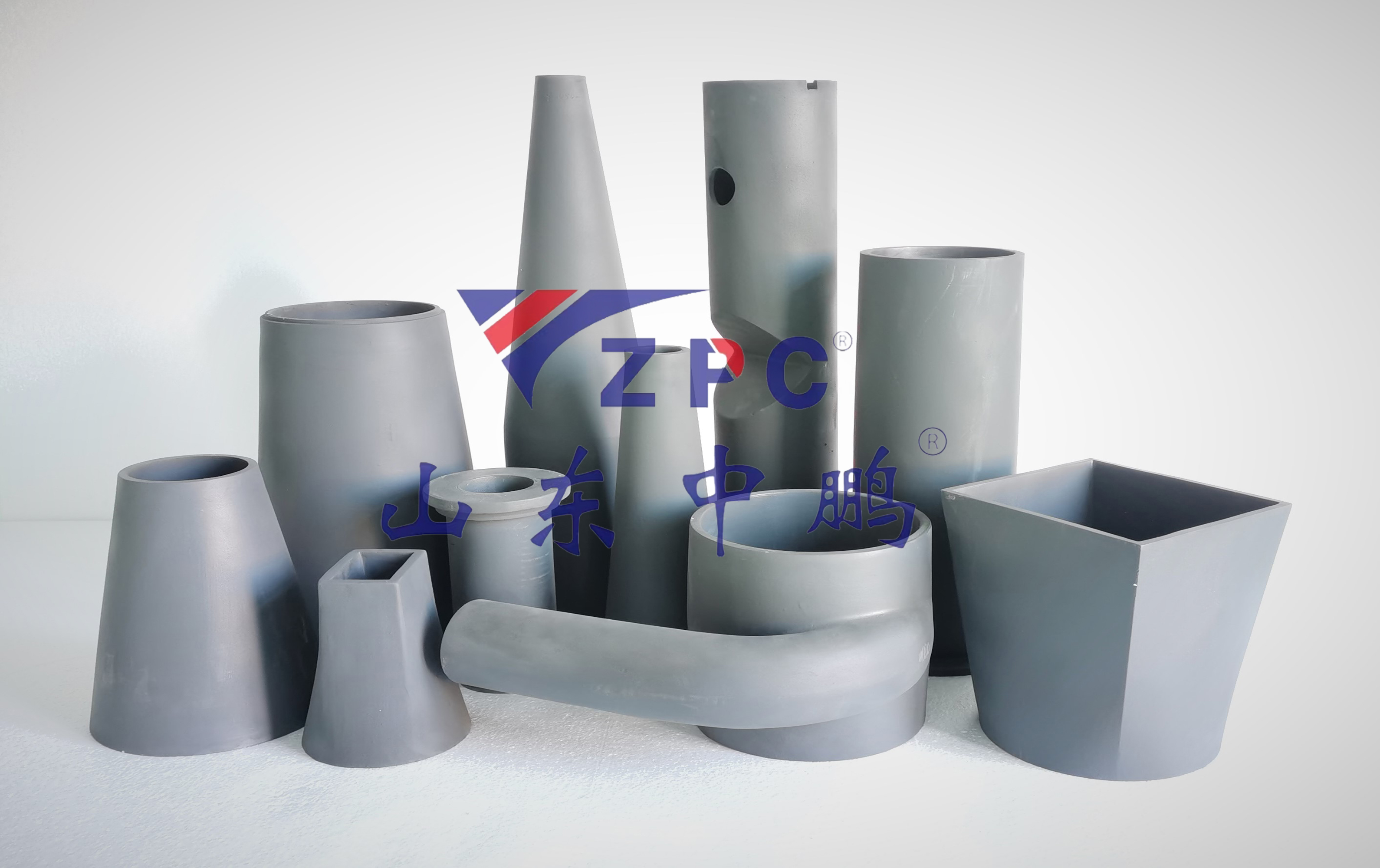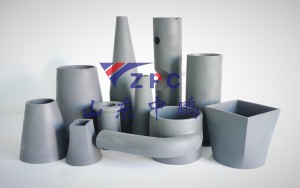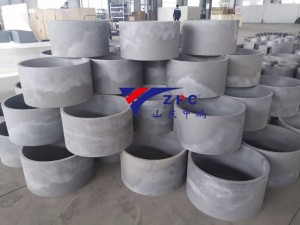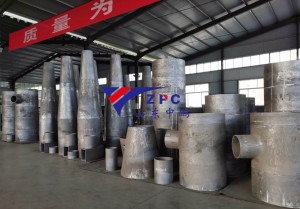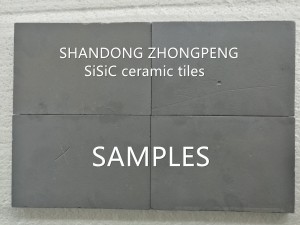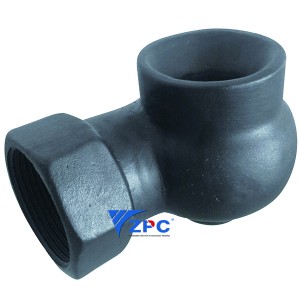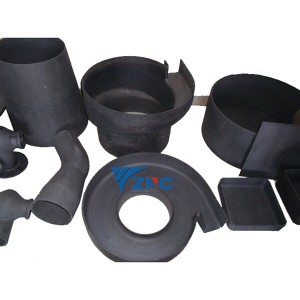Silicon carbide ceramic liners
Silicon carbide wear-resistant lining
Design Features of Silicon Carbide (SiC) Wear-Resistant Liners:
(1)Streamlined Flow Path Design
A smooth, streamlined contour from inlet to outlet minimizes flow resistance, making SiC liners adaptable to diverse industrial applications.
(2)Advanced Atomization
MechanismLiquids are atomized into fine droplets through tangential collisions with progressively narrowing helical surfaces of the SiC liner, ensuring uniform spray distribution.
(3)Compact, Clog-Free Structure
A straight-through, coreless flow channel eliminates internal obstructions, maximizing fluid throughput within confined pipe dimensions while preventing blockages.
(4)Dual Spray Modes for Enhanced Efficiency
Supports both solid-cone and hollow-cone spray patterns, offering wide coverage angles and anti-clogging performance for high-efficiency operations.
Core advantages compared to other materials:
(1)Unmatched Wear Resistance
Hardness:SiC liners achieve a Mohs hardness of 9.5 (vs. 8.0 for alumina ceramics, 6.0 for high-chromium steel), enabling them to withstand extreme abrasive wear in mining slurries, coal ash, and metal powders.
Longevity:Service life exceeds 5–10× traditional materials (e.g. rubber or polyurethane liners) in high-impact applications like ball mills or slurry pumps.
(2)Corrosion and Chemical Inertness
Acid/Alkali Resistance:Resists concentrated sulfuric acid (98%), sodium hydroxide (50%), and molten salts (e.g. NaCl-KCl at 800°C), whereas metals corrode rapidly and polymers degrade.
Zero Contamination:Non-reactive surface ensures purity in semiconductor or lithium battery production, unlike steel liners prone to ion leaching.
(3) Extreme Temperature Stability
Thermal Resilience:Operates continuously at 1,600°C (vs. alumina’s 1,200°C limit) with minimal thermal expansion (CTE: 4.0×10⁻⁶/℃), preventing cracking in kilns or smelting furnaces.
Thermal Shock Resistance:Maintains structural integrity under rapid temperature swings (e.g. quenching from 1,000°C to room temperature), unlike brittle ceramics.
(4)Energy Efficiency and Lightweight Design
Low Friction:Polished SiC surface (Ra <0.1 μm) reduces fluid resistance by 30–50% versus rough steel liners, cutting pumping energy costs.
Weight Savings:Density of 3.1 g/cm³ (vs. steel’s 7.8 g/cm³) eases installation and supports lightweight equipment in aerospace or mobile processing units.
Shandong Zhongpeng Special Ceramics Co., Ltd is one of the largest silicon carbide ceramic new material solutions in China. SiC technical ceramic: Moh’s hardness is 9 (New Moh’s hardness is 13), with excellent resistance to erosion and corrosion, excellent abrasion – resistance and anti-oxidation. SiC product’s service life is 4 to 5 times longer than 92% alumina material. The MOR of RBSiC is 5 to 7 times that of SNBSC, it can be used for more complex shapes. The quotation process is quick, the delivery is as promised and the quality is second to none. We always persist in challenging our goals and give our hearts back to society.
